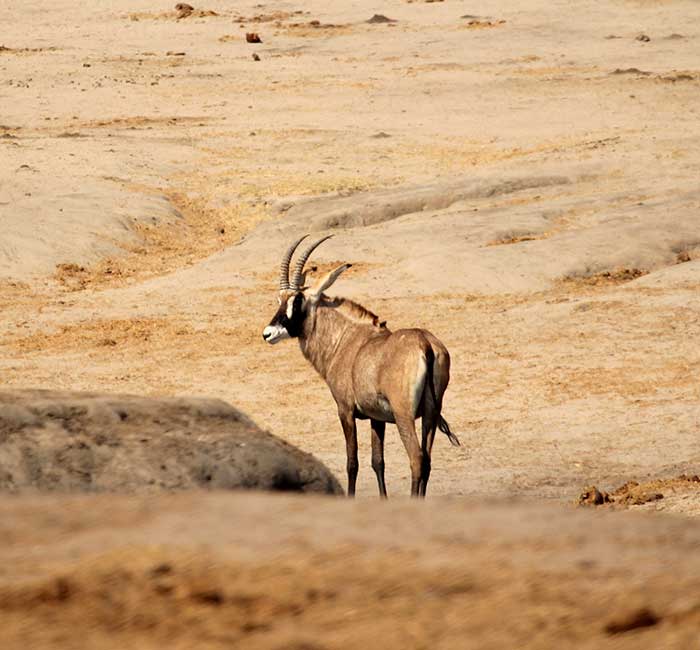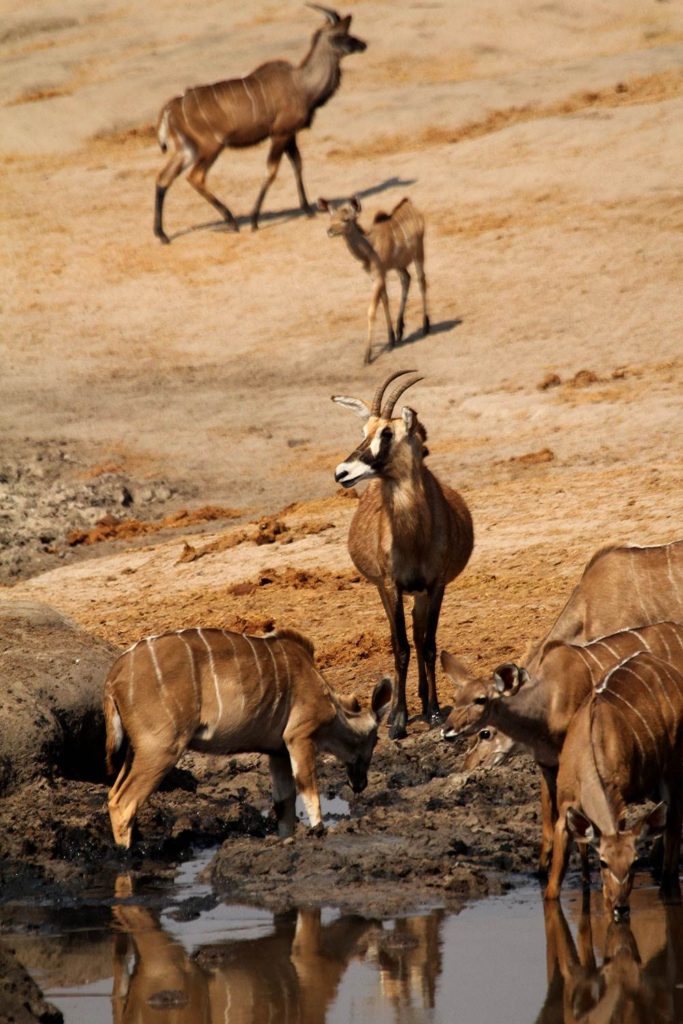Roan - hippotragus equinus
Roan antelope are the second largest antelope found in Africa and a matriarchal society.
This is a magnificent animal not often seen on safari. For infromation, the images shown were taken in Hwange National Park.
As its latin name suggests (horse antelope), roan are bo th grazers and browsers preferring lightly wooded savanna.


Description
Both sexes carry the back-curved horns, although the cow has a lighter and shorter horn than the bull.
Roan prefer open to lightly wooded grassland – avoiding areas with short grass. They are grazers and rarely browse.
For calcium and phosphorus they will chew bones.
The roan is a magnifient species, horse-like in appearance with very distinct colouring of black and white mask-like facial features, greyish brown in colour with a reddish tinge (roan).
Mass: Male 280 kg / Female 250 kg
Horn Length: 90 cm
Shoulder Height: Male 155cm / Female 145 cm
Herd strength
Led by an adult bull they live in herds of up to 12 – larger herds would be from 30 – 80 individuals.
Life Expectancy : 17 years
Defense Strategies
Enemies include lion, leopard, hyena, wild dog and crocodile

Feeding
Predominantly grazers but will browse if grazing is poor.
They will completely submerge their heads to get at underwater plants.
They chew bones for the calcium and phosphorus content.
Breeding
Calves are dropped at any time of the year following a gestation period of approx. 280 days.
The cow will leave the herd a few days prior to giving birth and will remain with the calf for the first few days before returning to the herd.
After feeding the calf will move to a new hiding place so that predators cannot find it by following its mother’s scent trail
